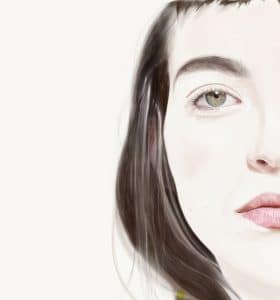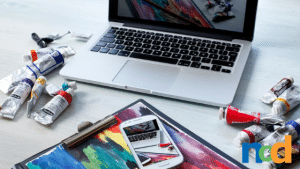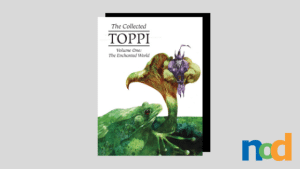Interview with Illustrator Max Hancock
by Margaret Penney | June 3, 2016

What originally made you want to be a graphic designer and illustrator?
It wasn’t a decision I made instantly, it was more gradual. At university, after art foundations, you are given a choice about what career path you want to take. I was all about technology and computers back then so I chose electronic media as a career path. In that way, I could have access to the best creative tools the school had to offer. I was asked to work there too and I ran the media lab there. I knew my design skills were still lacking so I also enrolled in many graphic design courses. That proved to be a good education strategy.
My education experience paid off, and I became a game and interactive designer right out of school. Over time, my drawing skills became less important, and my user interface (UI) and user experience (UX) skills were in demand as the Web matured. Creatively, my career was pushing me towards more dull advertising kind of stuff, and I was starting to program more too. I missed image making. I missed rendering. I was good at it. I got kind of burned out on UI and UX, and it was getting to the point that I enjoyed painting in those empty wireframe boxes more than making the wireframes themselves. That was the highlight of my day! And I guess some colleagues at my job took notice because one day we got a project that required a lot of illustration and I was asked to do them. That one project is what really lead me toward taking on a new career as an illustrator.
I work as a freelancer now, and I still do some Web design work but it’s nothing like the large scale projects I used to work on, so now I focus mostly on illustration and 3D rendering.
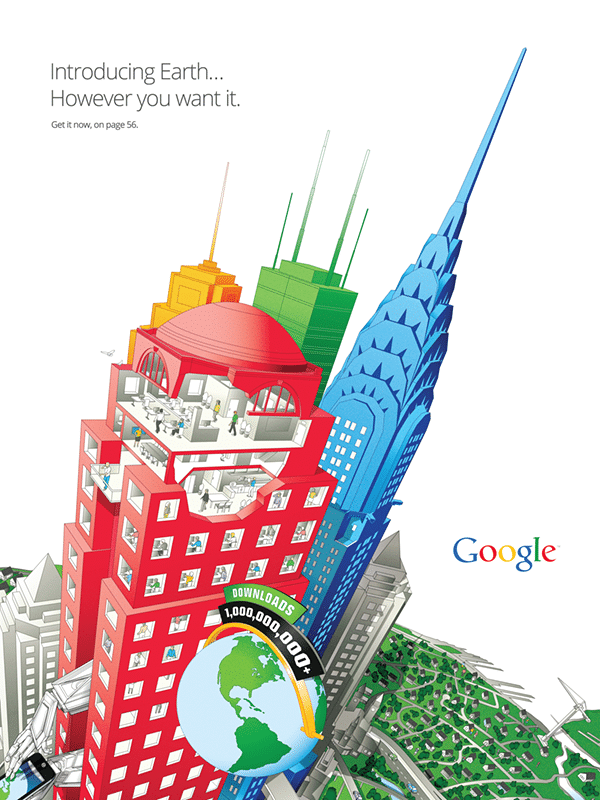
Google Maps Poster
How would you describe your illustration style?
I currently have four different styles I commonly use depending on what the client needs. I would describe my main style as hard-edge. Basically, I classify all styles by their contour types. My hard-edge style was really born out of necessity because back at the time it was important to do as many high-resolution renderings as I can within a short time. The computers I was working on then weren’t very fast, so to meet my deadlines I worked in vector using Adobe Illustrator. Today computers are faster, so how I work isn’t as important as how it looks. A few years ago when infographics were trendy, I was asked to do a lot more simplified, minimal type of illustration. That became another popular style I do.
As for my other styles, I’m still developing them. How I illustrate is evolving. I want to get back to a more hand drawn type of style, and back to the essence of illustration, with good composition and design. And, because I do a lot of 3D modeling and rendering now, I use it as another tool in my illustration, and that stuff often looks very different from my past styles.
What would you say is your strongest ability as an illustrator?
I guess my strongest abilities as an illustrator is based on my background and 3D skills. My background as a designer definitely helps me make more mature composition decisions. And my 3D skills give me the ability to work on large scenes with accurate perspective. I’m still growing as an illustrator, so it’s hard to say. I used to draw a lot of comic art by hand—pen and ink stuff. I tried to do that again recently and it’s safe to say I’m a lot worse at it than I used to be. The computer has spoiled me, and I’m just more used to making art with it now. But when I do that type of illustration with the computer, I can make it look the same as if I did it by hand because I’ve had a lot of real, tactile experience making art and I know how it should look.
What types of illustration projects do you enjoy working on?
That’s a difficult one to answer. I work on so many different things. I’ve gone back to calling myself a multimedia designer because I just do so many different projects. I enjoy most all of them. But for illustration, I really like developing characters and placing them in different scenes. I haven’t had a lot of client work that needs that sort of thing, but I enjoy it a lot.
I also have a love/hate relationship with the more idea driven, editorial types of projects. I get so frustrated when I can’t come up with a concept, and honestly, that happens a lot. Nothing is more frustrating than needing to come up with an award winning idea within a short time. That’s very difficult for me, but when I do land on a good idea it’s very satisfying.
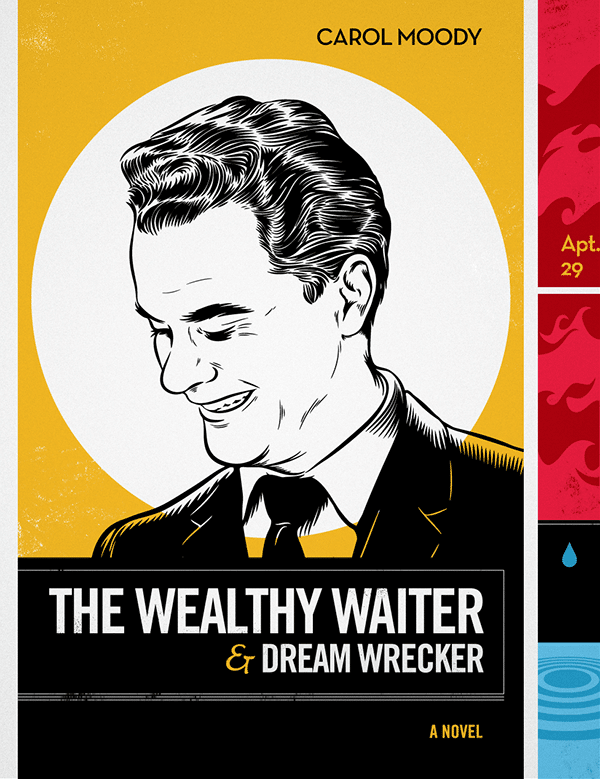
The Wealthy Waiter and Dream Wrecker by Max Hancock
Can you speak about your process coming up with and creating an illustration?
I think my process is much like other illustrators. I sketch out small thumbnail sized versions of different concepts and then pick out the ones I think will work best, and then develop it further. Sketching small keeps me from working on too much detail too soon, and that gives me the time to produce more options. But sometimes I don’t sketch because it’s really not necessary, or more accurately, it’s not the best process for the project. I can sketch in 3D just as well as I do by hand, so why not go right to that. Every project needs a different process.
What’s most important is understanding what the client needs. Good work starts with good communication. The more background information I have, the better the results will be. But, the idea and what I’m able to do with it is most important, and then it’s all about how well you render that idea. No matter how you go about it, you put your own personal, unique spin on your work. For instance, think back to your childhood home and the front door of your house. What kind of door was it? Was it flimsy, heavy, expensive or cheap? What kind of sound did it make? We all remember, it was a kind character we interacted with every day, whether we realize the details of it or not. We all have these subconscious experiences with the things, places and people in our past, and it’s what makes us unique. Those unique experiences, big or small, are what subtlety influence the way we illustrate. And a lot of illustration is like that, it’s remembering made visual, and playing with that to depict a thought, and borrowing from experiences we had in the past. I think a lot of the more interesting illustrators working today do that, they put their soul in their work and it makes the work better because of it.
How is your commercial work different than your personal work?
Very different. My commercial work is always very subject matter focused, but my personal work is, of course, free to go in any direction I want. I try to diversify and do a lot of different types of illustration. I see a lot of illustrators make the mistake of not diversifying the subject matter in their portfolio. They do a lot of personal work of things like melting skulls and bloody samurais fighting or whatever, but a client isn’t going to ask you to do that stuff. They’ll ask you to make some type of lifestyle illustration in your style. Or, they won’t even ask because they haven’t seen you do anything close to what they need. Still, the work that pleases me the most are ones that challenge me. I like to try different things and experiment with different rendering techniques, and it’s usually with the personal work where I can explore more with that.
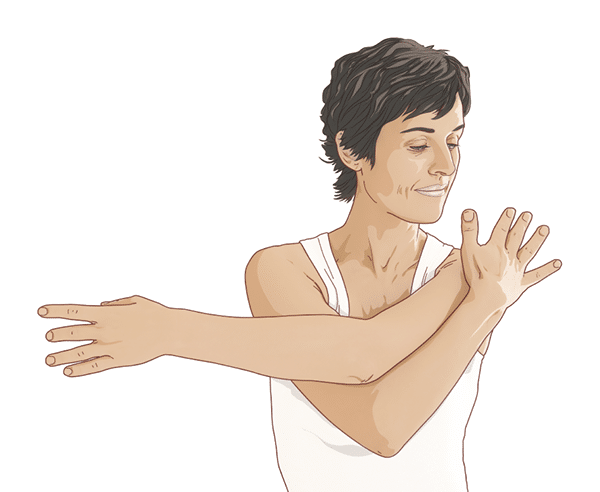
AARP illustrations by Max Hancock

AARP illustrations by Max Hancock
What kinds of applications and tools do you use? And how have they influenced your creative process?
Starting out, I referenced photos a lot, then I discovered DAZ Studio. I use it a lot to build characters and work out poses and scenes. I use it a lot for when I need to make high-quality storyboards, too.
The Wacom tablet is essential. It’s strange because I’ve been using it so long that I almost don’t know how to draw on paper anymore, seriously. When I hear about younger people incapable of using it I make a twisted face, ‘how can that be?!’ I think. Then I see my children try to use it and I see, it’s an obvious skill you need to learn. It’s like typing. It takes a while to get up to speed. By the way, I can type at 160 words per min, but I think at 40 words per minute, so there’s also that problem.
What are some trends or visual styles you appreciate in contemporary illustration?
Well, I naturally gravitate towards other illustrators that have similar styles. But beyond that, I’m really interested in illustrators that are able to infuse fine art and illustration aesthetics. Too many illustrators focus too much on kitsch or retro, so it’s always refreshing to see a new style that’s reflecting now. I appreciate illustration that looks fresh. Don’t get me wrong, I really love the retro styles too, but it’s the more artistic edgy stuff that doesn’t look like something from the past that fascinates me the most.
What are some of the most important considerations in creating an illustration today?
1. Know what your illustration is worth. People ask you to illustrate something because they want to be different from the competition. Great illustration makes your client look good and helps communicate what they do in the best way. That type of work is very valuable.
2. You gotta realize when a style is over, and when you need to move on and change it up. For instance, movie posters used to be highly illustrated, and they were usually done in a popular style for whatever genre, but all that stopped because it made a movie look old compared to those horrible Photoshop effect posters. Things change. Realize it and move forward with something new.
3. You must consider if you are going to focus on only one style and fill your portfolio with that, or if you will diversify. I don’t really understand illustrators that just keep doing the same thing over and over. I guess they do it because they want to be known for that—they want to own it. That’s got to get really boring. I can’t do that, I need to change it up every so often.

Capital Markets Illustration
Where do you see illustration going in the next few years?
Back then, design was most important. Today, style is king, and design has become the new engineering. I think people confuse fashion and design as being the same thing, it’s not. You see, something just isn’t what it is anymore, no, we need to attach a style to it. It used to be that a style evolves while problem-solving. But now a style is pulled from a library of “inspiration” like a color swatch. Need to make a poster about a cool music artist? Don’t do something original, go to the style bin and pick the cool new style from Dribbble or Behance. There’s a lot of that going on today. The Web makes it too easy to steal crap. There is too much ‘style borrowing’ and not enough originality. I think style for style sake without proper communication is dangerous. We used to call it “communication art” after all.
So anyway, maybe it’s best to be a designer before branching out to become an illustrator. The best illustrations are well designed after all.
Also lately I think there’s a weird backlash over precision or anything with a mechanical look and feel. There’s this desire for more real, tangible artwork going around. Art directors I’ve worked with lately have rejected even any faux texture stuff. They don’t like those grain filters at all. They want it to be real and they can tell when it’s hand-drawn, or so they think so. But they also want the work to be really well done and made quickly, and because of that, I don’t think computer art will go completely out of style. It’s just question of how can you make something look more natural by using the computer or not. As the illustration environment saturates, and as more artist and designers start doing it, there will be more competition, and then the need to do your work faster at the same quality level will increase. I think those few individuals that are able to do that will succeed.
I’m also seeing more artist mixing hand drawn art with computer techniques. They will draw several elements and then use a computer at the end of the workflow, as a tool for composing and cleaning up the work. I have seen some be very successful with that technique.
And last, as always, illustration closely follows current color trends, so you always need to be on top of that. I can’t stress the importance of color choice enough in your artwork. Trends come and go by color most of all. For example, maybe sepia will be all the rage again one day, and all those grunge pieces from the 90’s will be rediscovered and copied. Let’s hope not, but maybe.
Do you have any advice for illustrators just starting out?
Be strategic about your career, don’t wing it. Build a portfolio that will open doors to new opportunities.
Compare your current style with others and be honest…is it as marketable? Is it unique or pretty much the same as others? Find your own path toward success.
If you don’t want to do tedious art, then don’t do that style. Stick with styles you are comfortable with, because you’ll be asked to do it many times. Minimal design styles are just as applicable as all of that crazy intricate, hard to do stuff.
Don’t let any tool dictate your style or design concepts and don’t rely on stock material, unless there really is no time to develop something unique.
Always make work that just satisfies you, especially when it comes to your personal art. You need to keep yourself happy. Take time to keep yourself in shape, physically and mentally.
To see more of Max Hancock’s work, please visit his portfolio at https://maxhancock.co/.

Margaret Penney is the Managing Editor of Notes on Design. Margaret is a teacher, designer, writer and new media artist and founder of Hello Creative Co.
For creatives seeking a thorough training in illustration and graphic design, Sessions College offers accredited fully online illustration certificate and illustration degree programs. Contact Admissions for more information.






